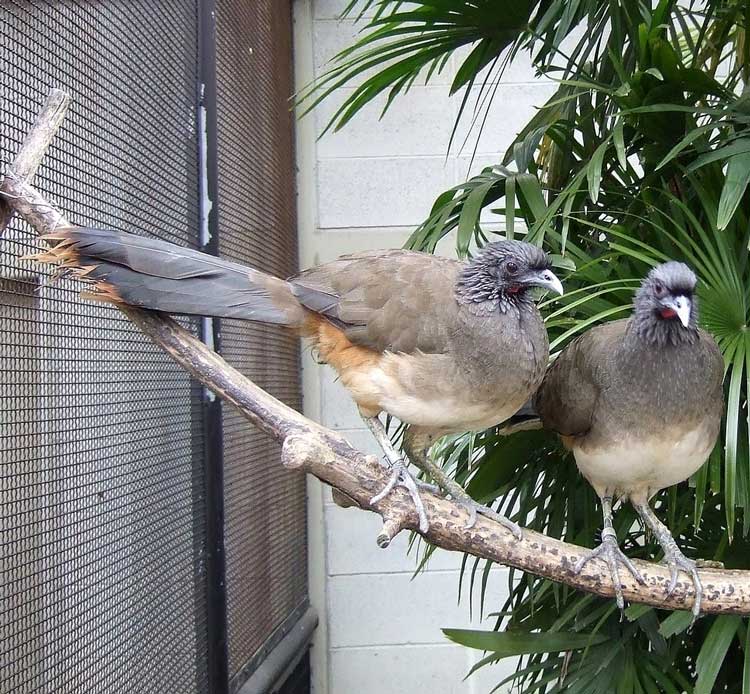Ortalis ruficauda (*) Cladus: Eukaryota Name Ortalis ruficauda Jardine, 1847 Reference Annals and Magazine of Natural History (1) 20 p.374 Vernacular names The Rufous-vented Chachalaca, Ortalis ruficauda, is a member of an ancient group of birds of the Cracidae family, which are related to the Australasian mound builders. It inhabits northeast Colombia and northern Venezuela where it is called Guacharaca, and in Tobago where it is known as the Cocrico and is the island's national bird. It is also found on Bequia and Union Island in the Grenadines where it may have been introduced. Rufous-vented Chachalaca is a largely arboreal species found in forest and woodland, but it is also found in more open dry scrubby areas. This combined with relatively low hunting pressure, make it far less vulnerable than larger members of the family, notably curassows. These are medium-sized birds, similar in general appearance to turkeys, with small heads, long strong legs and a long broad tail. They are typically 53-58cm long; the female weighs 540g and the larger male 640g. They have fairly dull plumage, dark brown above and paler below. The head is grey, and the brown tail is tipped rufous or white depending on race. As other chachalacas, the Rufous-vented Chachalaca is a very noisy species, preferring to execute their vocal feats at dawn. The male's call is a loud low ka-ka-rooki-rooki-ka, answered by the female's high-pitched watch-a-lak. The species is a social bird, often seen in family groups. It walks along branches seeking the fruit and seeds on which it feeds. It is an able flyer that can even take off and fly vertically, but does not usually fly long distances. The twig nest is built low in a tree, and three or four large white eggs are laid. The female incubates them alone. This species is one of the national birds of Trinidad and Tobago and is featured on that country's coat of arms along with the Scarlet Ibis, the Ibis representing Trinidad and the Cocrico, Tobago. The Cocrico is currently a pest in its native island of Tobago and agriculturists in Trinidad and Tobago are currently experimenting with ways of utilizing the animal to benefit humans and to maintain a healthy population in the wild. References * BirdLife International (2004). Ortalis ruficauda. 2006. IUCN Red List of Threatened Species. IUCN 2006. www.iucnredlist.org. Retrieved on 11 May 2006. Database entry includes justification for why this species is of least concern Source: Wikipedia, Wikispecies: All text is available under the terms of the GNU Free Documentation License |
|

